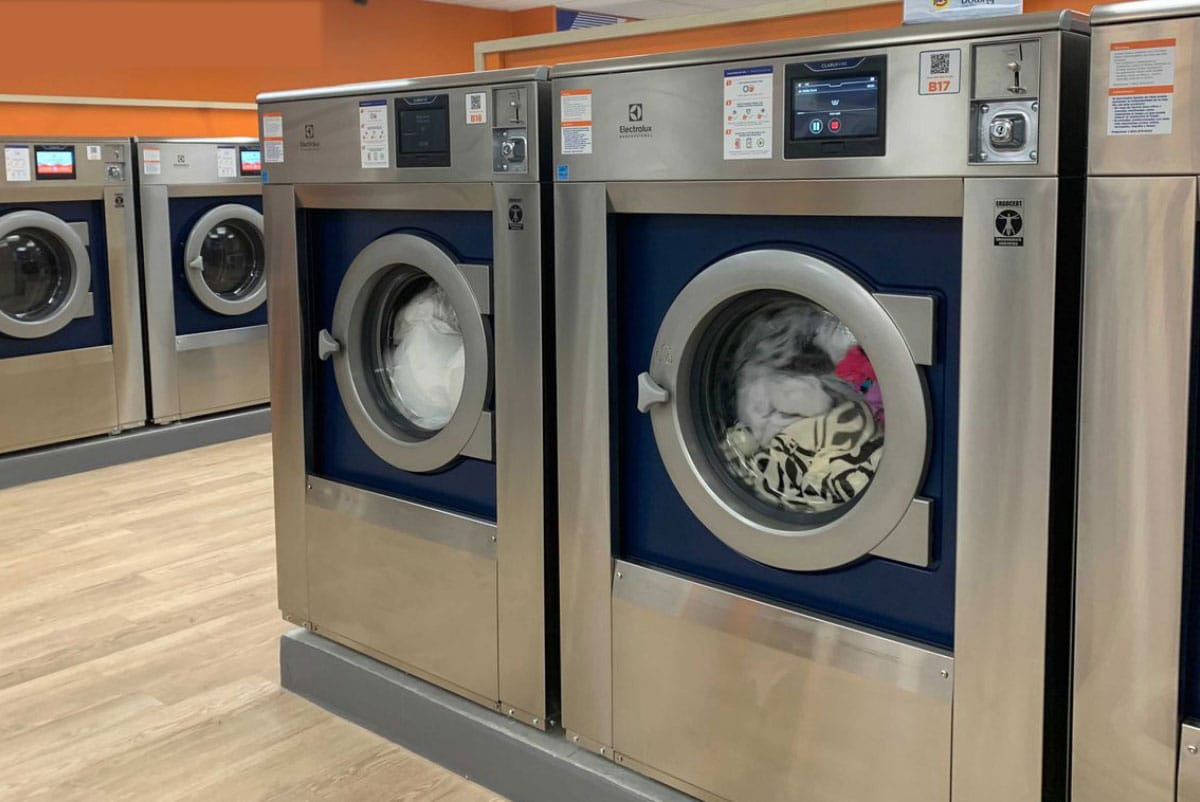While laundromats may have been dismissed as a dying business model, those who’ve crunched the numbers
know that couldn’t be further from the truth.
With careful planning, good management, and the right equipment,
owning a laundromat can be lucrative.
Naturally, potential investors want to understand exactly what the
financial opportunity is when considering putting their funds into a
laundromat business.
They want to know how much work is involved and how much money
they can expect to make. Here, Start-a-Laundromat has summarised
the frequently asked questions we’ve received relating to what goes
into a successful laundromat and how profitable the average
laundromat owner can expect to be.
We’ve summarised the frequently asked questions we often receive. Simply click on
the question below to find the answer you’re searching for.
What’s different about today’s laundromats?
How do you open a laundromat? The laundromat industry has undergone an evolution in recent years.
Today’s laundromats are modern, bright and airy. Some offer multi-
services where customers can have a cup of coffee or grab a snack. The
best offer free WiFi so customers can scroll social media, read the paper
and tick off other things on their to-do lists.
In our experience, successful laundromats that make a tidy profit are
those that combine laundry with either other great services or focus on the
experience they’re delivering their customers.
The traditional automatic coin laundry systems may have been used primarily for
laundering personal items, but today’s laundromats with large
commercial machines can handle household bedding, curtains, blankets
and doonas. This is an added drawcard for customers and creates
additional revenue streams for the business. Some even offer dedicated
machines for pet bedding.
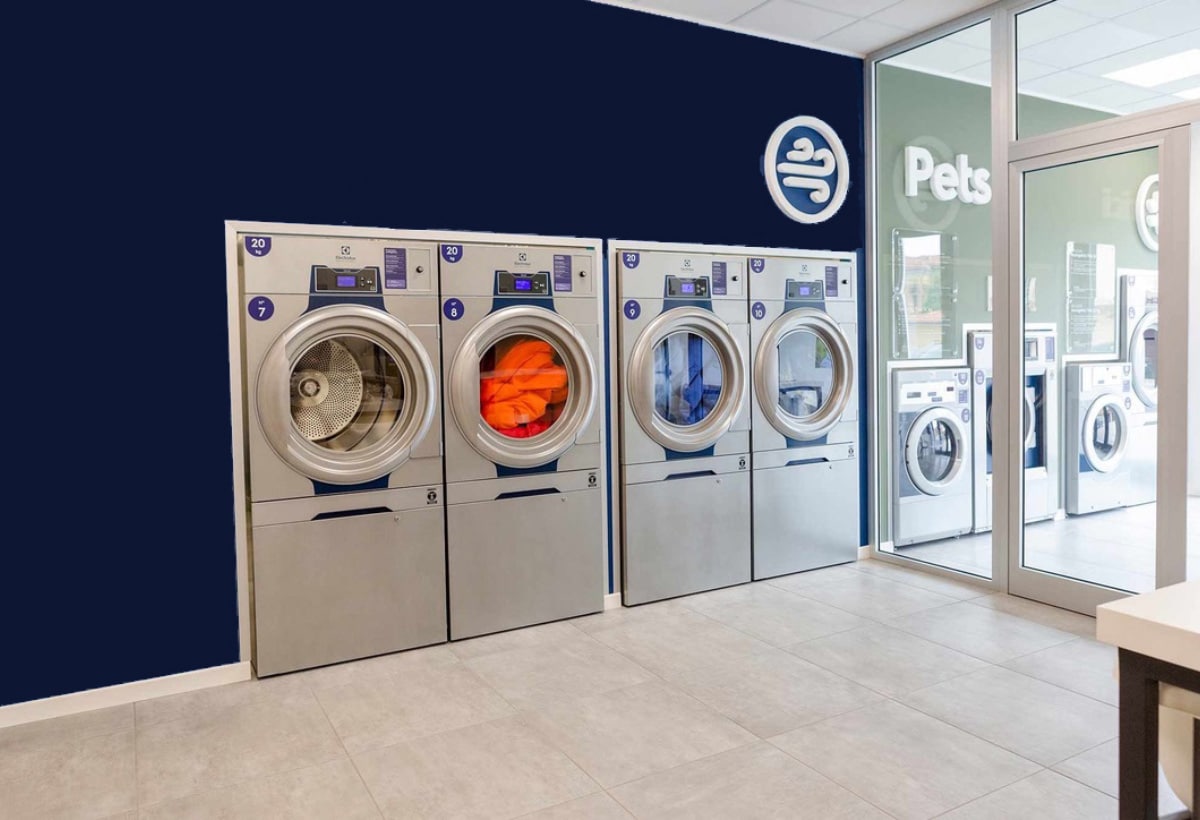
How profitable is a laundromat?
That all depends on how well the business is run. We’ve worked with
laundromat owners who make more than $15,000 net profit a month.
On the flipside, a poorly managed business can be costly.
Once you’ve invested your start-up capital and the laundromat is
established (which will involve an initial outlay of between $100,000
and $300,000 – all dependant on the type of laundromat that you’re
building – size, functionality offered, etc.), it’s a relatively low
maintenance business that can flourish with a little love, care
and ingenuity.
ALike most businesses, it costs money to get started. In laundromat
business long as you have the commercial acumen and industry knowledge
needed to run the business effectively, a laundromat can be a lucrative business.
In terms of return on investment, a rough guide
is approximately 20-35% if your laundromat is
already well established and in a good location.
This assumes that your laundromat is
unattended, wages being the highest cost in the
laundry business.
What variables affect a laundromat’s profitability?
A number of factors will impact your profitability. Location is a huge
one. Signage, advertising and digital presence are also major factors.
Quality of machinery is another big profit indicator. As are décor,
lighting, car parking and general atmosphere. We go into detail about
why this is in some of the questions below.
Is a laundromat a good business to own?
Definitely! If you’re willing to put in the work and think outside the
box, it can be a great business that’s relatively low maintenance
and has good profit margins. There’s also opportunity to grow by
acquiring new locations and buying up established businesses.
Before you know it, you could have a chain.
The backbone of any business is repeat customers. Location is, of
course, extremely important. A well-equipped and well-managed
laundromat will not reach its full income potential unless the
location is right. That said, you could have the best location in your
area, but if you don’t provide the services your customers are
looking for, they won’t be back.
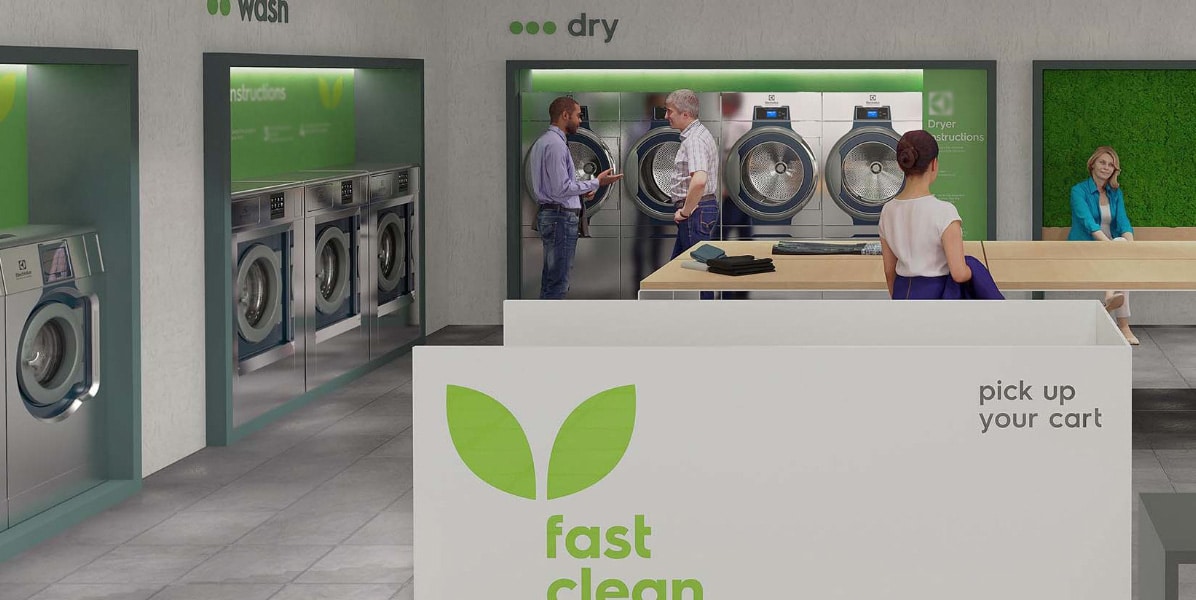
A survey conducted in laundromats asked customers: “If you could wash your clothes in any type of laundromat, what attributes would it have?” These were the most common responses:
- Machinery in excellent condition
- Very clean with high-quality equipment
- Close parking
- Warm and comfortable atmosphere
- Feel safe and welcome
Another factor to consider is signage. Your exterior sign has the
potential to be your No.1 traffic builder for your business. Make sure
your exterior signage is highly visible to cars and pedestrians. You
want people to take notice of your laundromat and remember where
you are. A range of internal signage will also need to be designed
and installed, as well as clear instructional signage on your self-
serve equipment.
All laundromat owners need to think about how they’re going to
advertise their laundromat and build its digital presence – in a day
and age where Google and social media can make or break your
business, they need to be considered as tools. We recommend
setting aside either some time or funds to set up a simple website,
Google My Business page, and social media accounts – for example
a business Facebook page and/or Instagram account (which way
you go should be dictated by the demographics of your customers).
Google Reviews will be crucial to building your customer base and helping your laundromat be found online, so make sure your Google My Business listing is clear and up to date. Investigate local advertising options such as community newspapers or noticeboards.
Think about what type of atmosphere you want to create in your laundromat. Get clear on the experience you want your customers to have, and treat your furniture and décor as a means for achieving this.
The backbone of any business is repeat business. You may have the best location but if you don’t offer a positive experience, your customers won’t be back.
Thinking of investing in a laundromat?
Enter your details below to speak with a laundromat expert
Are laundromats a dying business?
This is a common misconception and in our experience there’s no
truth to it. With the rise of high-density living and apartments
getting smaller, people still need to wash their clothes and they
don’t necessarily have the space or the funds for laundry equipment
in the home.
Today’s successful laundromats are anything but soulless
and fluoro-lit, they’re warm, bright spaces that customers
love to spend time in.
How do you calculate the salary of a laundromat owner?
Success is measured in return on investment (ROI) and regular cash
flow. Essentially a laundromat is selling time, water, electricity and
gas. Since there is none (or very little labour), ROI is high. Since it is
a Vend model with no stock, no spoilage or inventory, the owner is in
control. Cash flow is achieved by hundreds of small transactions
weekly and the owner is in charge of the price.
Is a laundromat a profitable business?
If it’s managed the right way, absolutely! If your laundromat is well-
established from the outset in terms of your store location, fit-out
and services, you can definitely turn a laundromat into a profitable
business.
What you get back from your laundromat investment depends on
what you put in in terms of innovative thinking, customer service,
capitalising on opportunities, creativity, and quality.
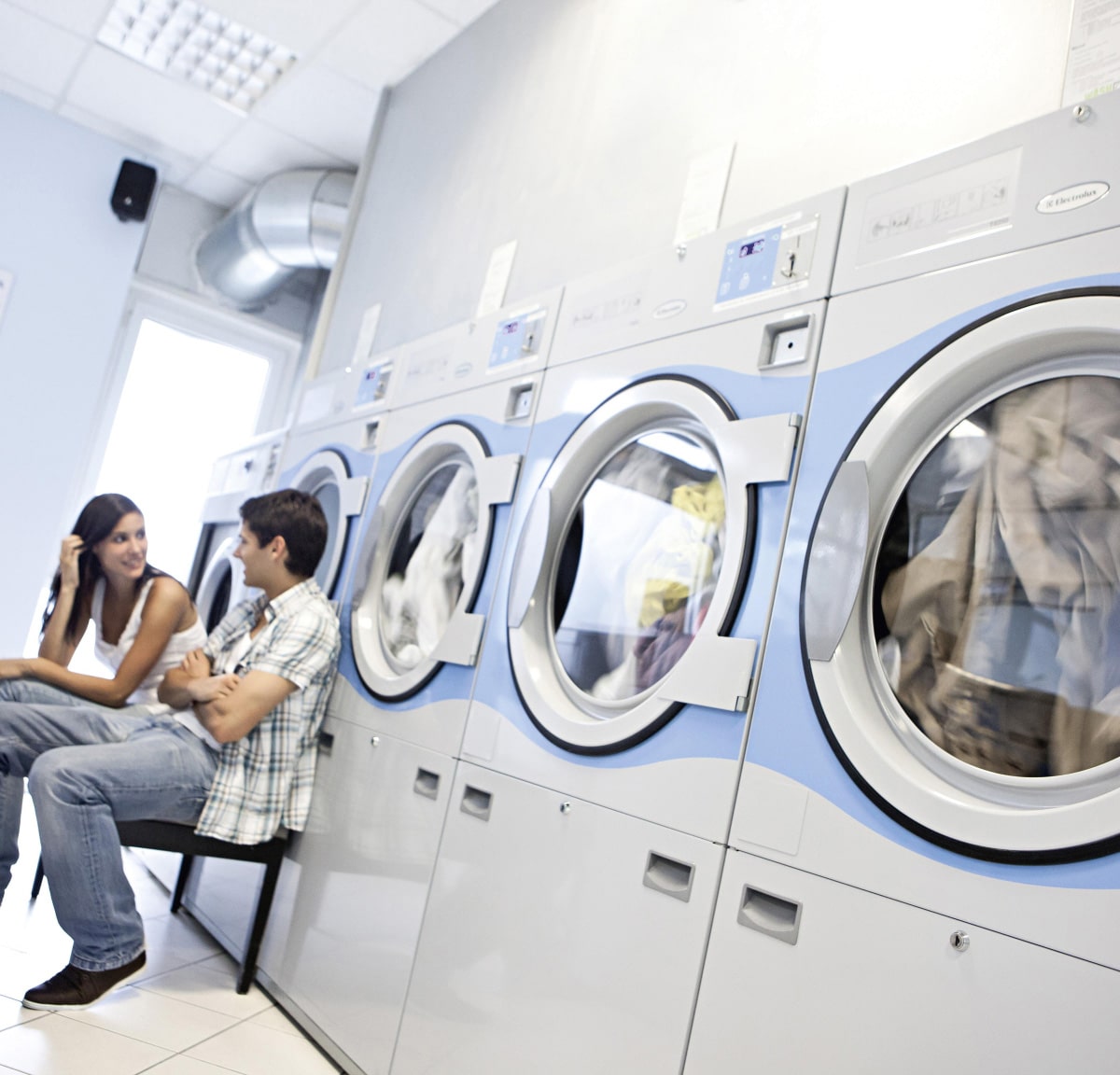
How much does it cost to get a laundromat up and running?
As with any business, there are set-up costs to factor in when
organising finance for your new laundromat. These amounts will
vary depending on whether you choose to run a self-service or fully
serviced facility.
Negotiating a shop lease with favourable terms is crucially
important because of the high costs associated with connecting
utility infrastructure, which includes electricity, gas, plumbing, dryer
flues and a cooling pit.
Subject to approvals, commercial laundry experts Richard Jay can
finance your entire laundromat set-up througha range of financing
options if you have a good credit rating, enough money to service
the lease andaccess to funds for store furnishings and advertising.
This includes fit-out, equipment, installation and accessories –
everything you need to establish your laundromat.
Expect to invest between $100,000 and $400,000 in
setting up a laundromat from scratch.
Costs will vary depending on:
- size,
- rent,
- equipment capacity,
- number of machines,
- types of machines, services offered and
- fit-out.
Before you sign your lease, you’ll need to understand the design and
layout that’s achievable in that space. This is your opportunity to get
creative and work with experts as you think about aesthetics,
theming and what interesting things you might like to do with the
space.
Your laundromat’s internal fit-out will require design assistance from
a laundry professional to ensure correct workflow and space for
utilities. If you’re establishing a fully serviced laundromat, you may
need to factor in a lockable space where staff will serve customers
and provide folding and ironing services.
The next step is organising business insurance for your laundromat and
applying for relevant council approvals. Furniture and lighting will need
to be considered in the design phase before moving on to carpentry,
floor coverings and other fixtures & finishes. Once your fit-out is
complete, signage and furniture will also need to be commissioned.
Then of course there are machinery purchase or leasing decisions to
make. You’ll need to hire qualified tradespeople to help establish your
laundromat infrastructure, including its gas supply, cooling pit, lint trip,
dryer ducting and make-up air.
As with all businesses, there are a range of little-known set-up costs to factor in. These include but are not limited to:
- Council applications
- Carpentry – floor coverings
- Machinery purchase and finance options
- Plumbing and gas supply (including cooling pit, lint trap,
dryer ducting and make-up air) - Utility charges
- Trade waste application
- Security and insurance
- Signage and advertising
- Furnishings
- Electrical requirements
How much money can you make owning a laundromat?
To help you forecast profits for your laundromat, Richard Jay has a Laundromat Calculator that takes into account your laundromat’s capacity and operating costs to assess the revenue ability for the business.
The Calculator can help you better understand whether it’s more cost-effective to lease a vacant shop and build the internal fit-out or buy/lease an existing laundromat.
To determine the viability of your investment, the calculator will shed light on:
- Initial set-up costs
- Total machinery running costs Estimated revenue
- Estimated ROI
- P&L forecasting
Then you’ll have to take into account your:
- Opening hours per day – typically 6am until 11pm – with
technology these days it is common to find them open
24/7 – in fact we have seen them with no doors or locks! - water cost per litre
- cost of gas per mj
- chemical cost per kilogram
- capital costs
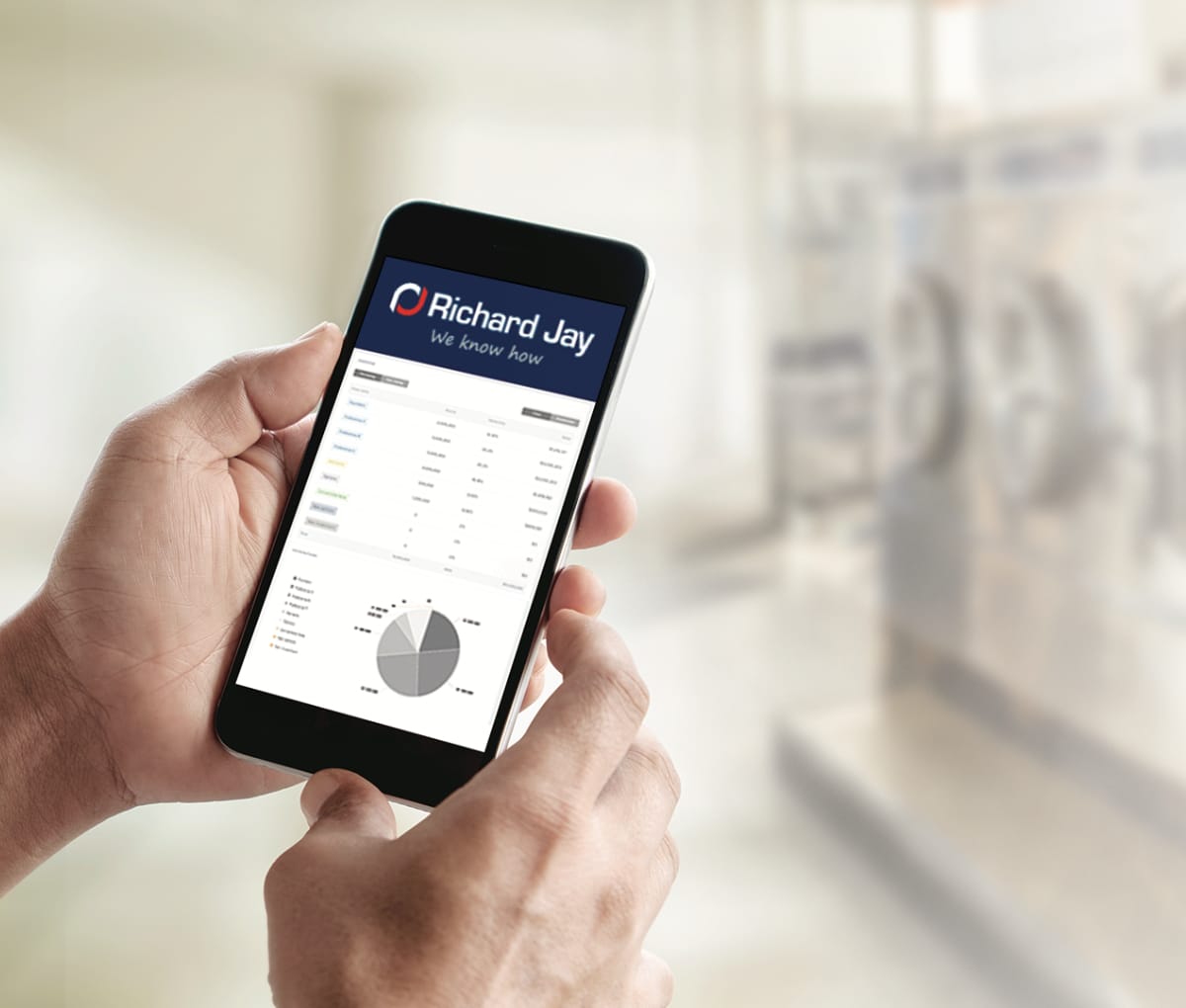
What you get back from your laundromat investment depends on what you put in in terms of innovative thinking, customer service, capitalising on opportunities, creativity and quality.
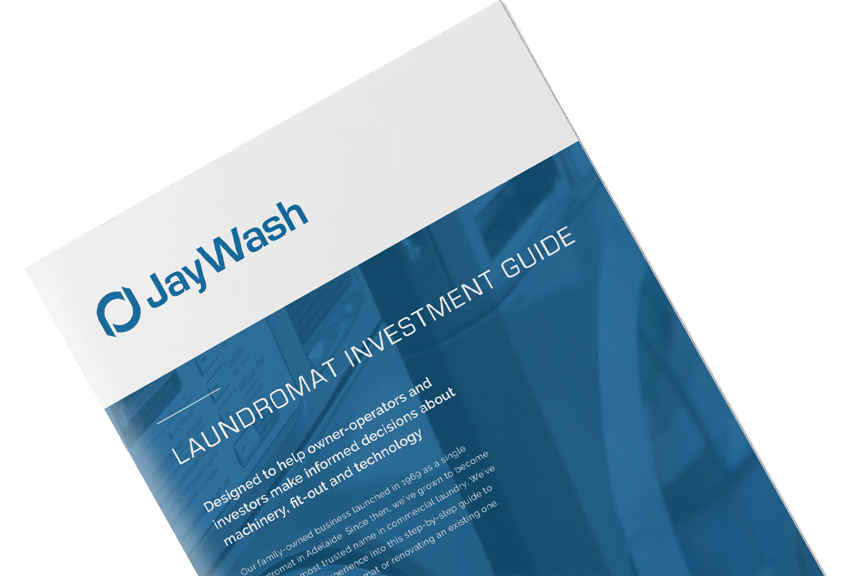
Get your FREE laundromat start-up guide
Download it hereHow do I start a successful laundromat?
How to start a laundromat? The first thing to do is pick a profitable location. Location is key
when it comes to whether a laundromat will succeed or fail. By
identifying prime market areas, investors can better assess their
store placement and competition to capitalise on gaps in the market.
Where you choose to open your laundry can make or break your
business. Find out as much as you can about the demographics
within a 5km radius of your potential premises. Analyse the
population, predominant type of dwelling and income level.
Make sure the site you choose is highly visible to passing road and
foot traffic. Main roads and busy high streets are ideal, but do
consider the speed limits and traffic flow.
Easy access to sufficient customer parking or public transport is
essential because laundry baskets are heavy. This is why you rarely
see laundromats in multi-story shopping centres.
Look for densely populated areas and a high proportion of rental
properties or holiday accommodation options. Self-service
laundromat models suit low-income areas with lots of apartments
and large families, or students. Fully serviced laundromats offering
washing and ironing services are more successful in higher-income
areas and holiday destinations where there is demand from local
businesses.
Ideally your site should be close to other businesses so your
customers can run multiple errands in one go. Supermarkets,
medical centres, restaurants, cafes, bottle shops and professional
service providers are ideal neighbours for a laundromat. However
parking is important – you don’t want the parking held up by people
who are at the gym, beautician or hair salon for hours!
Here’s a handy checklist you can refer to when selecting a site for your new laundromat:
- Is the location near a group of shops with good access
during the day? - Is there convenient parking either right outside or very
close by? - What’s the local competition like (old, tired laundromats
needn’t put you off)? - Is there a good rent agreement in place (below $40k is
ideal, depending on your location)? - How are the lease conditions and terms?
- Is it ground floor? Highly preferred.
- Is the type of flooring suitable for the washers you want?
- Is the space big enough (we recommend at least 5mW x
10mD)?
- How are the council requirements set up in terms of
permits? - Is there an area for the cooling pit/trap (best
underground)? - Does the gas supply cover the running use of all dryers
you need? - Can the electricity handle all the washers and dryers you
need? - Are the gas lines well located?
- Are there any building restrictions?
- Can you use the service ‘Dial before you dig’ on 1100?
What’s the deal with leasing and utility infrastructure costs?
Long-term store leases (typically 10 years) and projected utility
costs will need to be estimated in advance. While laundromats are
low-maintenance overall, power, gas, water, waste water and
plumbing costs can be high due to long opening hours and an
abundance of electrical equipment on site.
Pay close attention to the brand of laundromat equipment you select
and seek professional advice. Energy efficient, water-wise models
are recommended to keep utility costs to a minimum.
An important consideration for any laundromat owner is utility
infrastructure.
Keep in mind that:
- The appropriate electricals will need to be installed for all laundry equipment, as well as gas plumbing for dryers.
- You’ll need to organise plumbing for all washers, and your laundromat may also require a hot water system.
- Ventilation (fluing) for dryers will need to be installed and run to the outside of the shop.
- Installing a cooling pit is recommended to cool all water that drains from the washers.
How can I increase the revenue in a laundromat?
One way you can increase revenue in your laundromat is to digitise
your business and offer quick cashless payments for your laundry.
The right system will allow you to monitor your business, change
pricing, activate machines and monitor faults remotely…from
anywhere!
Removing cash from the equation deters would-be thieves,
increases revenue for your business and improves the laundry
experience for your customers.
With Richard Jay’s e-CleanPay cashless payment system you
achieve the ultimate in smooth investing. What’s more, you are not
required to collect confidential data to process payments.
Powered by Brisbane company TangerPay, e-CleanPay has a super-
fast transaction processing time via smartphone using Visa,
Mastercard, Amex, Apple Pay, Google, Samsung and PayPal. Set-up
is straightforward and there’s no app to download.
Many successful laundromats combine laundry with other
services to increase their revenue. Some savvy laundromat
owners install ATMs and food and beverage vending
machines for their customers. Other bright ideas include:
- Kids’ corner
- TV & video games
- Free wifi
- Pet-only machines
- Garment repairs & alterations
- Wash ’n’ fold service
- Pick up & delivery
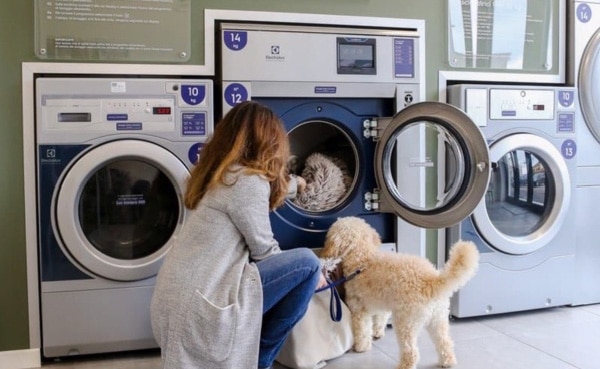
Why do laundromats fail?
The primary reason laundromats fail is bad management and
unrealistic expectations of passive income. Sometimes owners make
the mistake of thinking a laundromat is a ‘set and forget’ type of
business. It’s not. All too often a person will purchase a laundromat
with the idea that as long as they collect their earnings every week,
the business will continue running without their input.
When establishing a profitable laundry, the first things to consider
are who your customers are, the machinery you require and the
space you have available.
Working with our experienced laundry consultants and qualified
architect, you can visualise your laundromat’s exterior facade design
and interior layout before you finalise your machinery purchases.
Partnering with the right commercial laundry equipment
provider is an important decision for any laundromat owner
– one that contributes to the success of your business. You
want to choose machinery that’s built to last, and
performance driven.
Need personalised advice?
Enter your details below to speak with a laundromat expert
How much is it to buy a laundromat?
This will depend on whether you’re buying an existing laundromat or
fitting out the business from the ground up.
As a general guide, you can expect to invest between $100,000 and
$400,000 in setting up a laundromat from scratch. Costs will vary
depending on size, rent, equipment capacity, number of machines,
services offered and fit-out.
Subject to approvals, Richard Jay can finance your entire laundromat
set-up through Capital Plus if you have a good credit rating, enough
money to service the lease and access to funds for store furnishings
and advertising. This includes fit-out, equipment, installation and
accessories – everything you need to establish your laundromat.
The capital you need to start a self-service laundromat business will
depend on the size of the laundromat, the equipment required and the
complexity of the fit out. A small shop may cost <$100,000+ while a
spacious business offering lots of equipment could be up to $500,000.
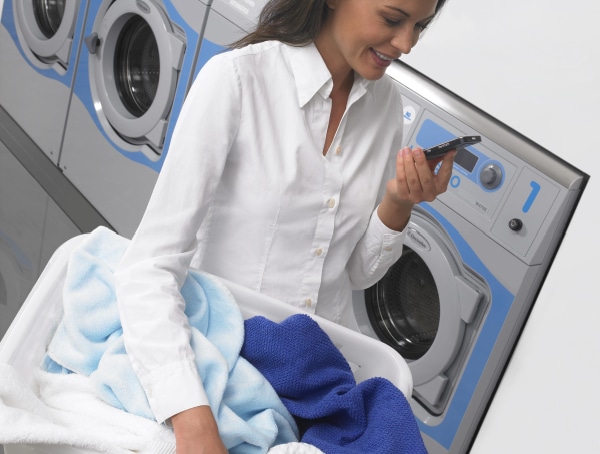
How much does a laundromat make a year?
The amount of money a laundromat makes tends to vary wildly
depending on location, size and most importantly, how well-run the
business is. Estimates of profit could be as high as $150,000 for a
shop grossing <$500,000 per year.
The bottom line is that an expertly managed, well-maintained,
regularly updated laundromat where the owner pays close attention
to the atmosphere and improving efficiencies will always earn more.
Are coin laundries profitable?
Past performance would indicate that yes, of course they can be, but
there’s a security risk involved as well as the fact that cash is
becoming less dominant in our society.
As our society moves away from cash, it’s important that your
laundromat take note of this and accommodate them through
cashless or combination payment options.
However your customers prefer to pay, today’s new payment
technologies are designed to accommodate them. Your laundromat
can be 100% cashless, coin-operated, token-operated or a mix of all
three – it’s up to you.
Tap ’n’ go or smartphone payment systems make life easier
for customers who don’t carry cash. Making your business
cash-free is also an effective way to deter thieves who
target unmanned, cash-based businesses.
What does cash flow mean in a laundromat?
Cash flow in a laundromat essentially the same as cash flow in any
type of business – it refers to the net balance of cash moving in and
cash moving out of a business at any given point in time.
Depending on what’s happening in the business, cash flow can be
either positive or negative. Ultimately you want to work towards
your laundromat having a positive cash flow.
What are the reasons not to buy a laundromat?
Running a successful laundromat requires a time, effort, patience
and good management. If you don’t want to put any thought into
how to establish the business and make the most of it, it’s probably
not for you.
